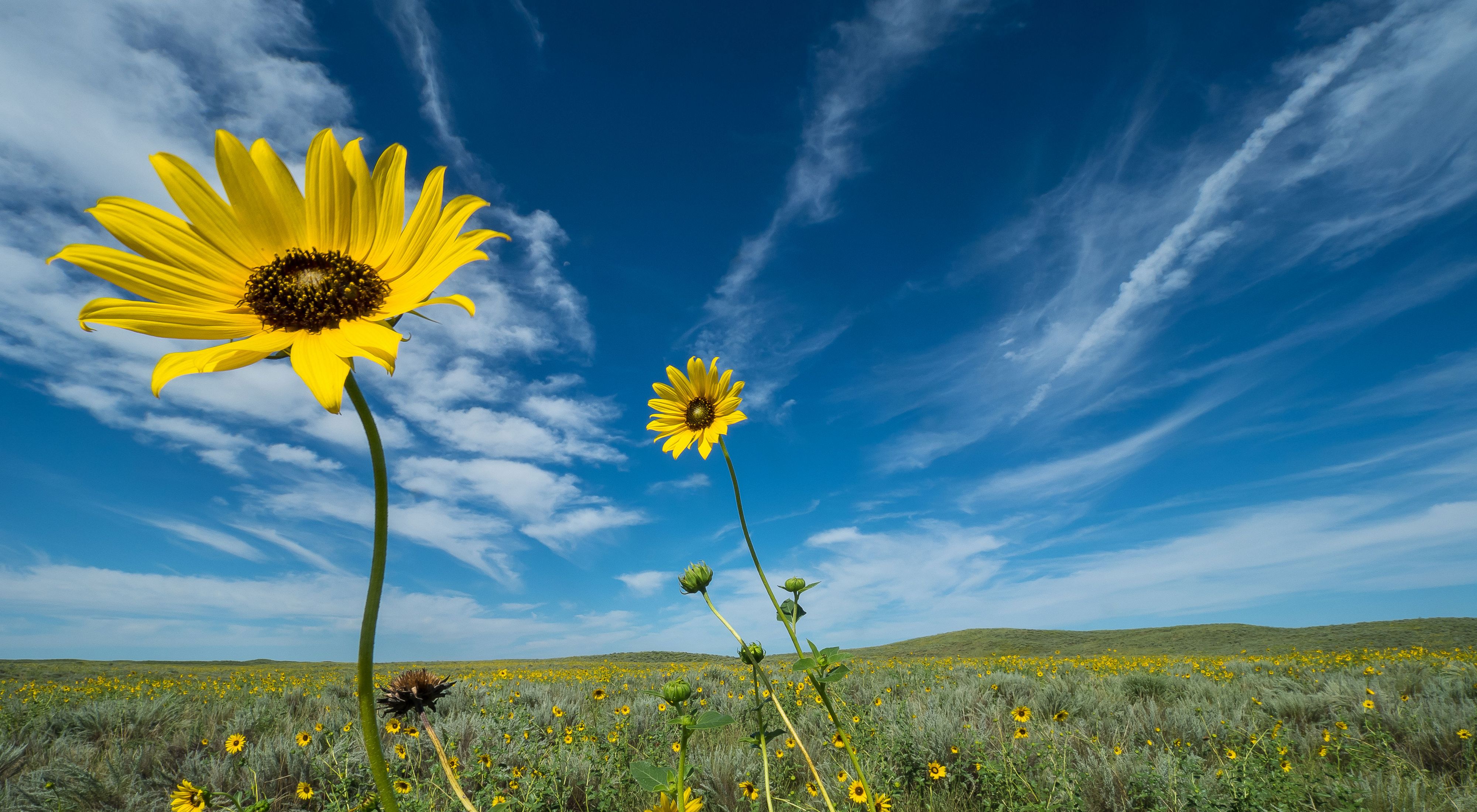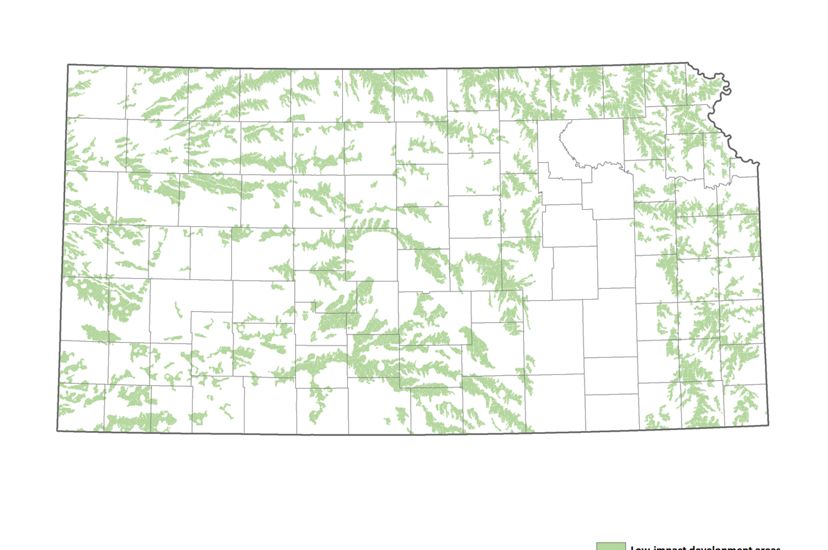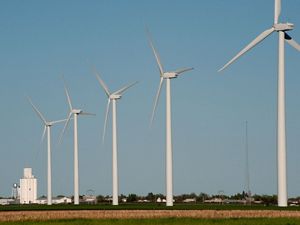You've heard the jokes about Kansas weather. It's usually a riff on the famous lament often attributed to Mark Twain: "if you don't like the weather now, just wait a few minutes." But while Kansans have come to expect the unexpected when it comes to the occasional snow in May or 90-degree temperatures in October, we also know that the changing climate isn't a just sometimes or distant threat. Ask Kansas farmers and ranchers and they'll tell you they are experiencing increasing temperatures and more variable precipitation now.

Kansans also know that efficient and clean energy like wind and solar aren't just in the future for the state—they are the current reality with Kansas ranking 4th in the nation for wind capacity. But while our state is a leader when it comes to large-scale wind production, we have fallen behind in our ability to implement other clean energy technology and increase the efficiency of our energy use.
State legislatures across the United States are accelerating climate action commitments with bipartisan support. The 2021-2022 Kansas Legislative session has already seen several bills addressing renewable energy and efficient use of our natural resources supported by legislators from every party. The Nature Conservancy uses the best available science and decades of field experience to help Kansas lawmakers make informed decisions about policies that will directly reap the environmental and economic benefits of clean energy.
C-PACE: Clean Energy Financing Solutions
Commercial Property Assessed Capital Enhancement (C-PACE) programs provide long-term, low-cost financing for clean energy and water and energy efficiencies in new or existing commercial properties. It also has multiple agricultural applications. C-PACE financed projects create jobs and enhance economic growth while conserving water and energy resources and improving air quality.
C-PACE has been used since 2007 and has provided more than $2 billion in funding for projects in 37 states across the United States—including all four states bordering Kansas. It's time for Kansas to join Colorado, Missouri, Nebraska and Oklahoma in implementing a clean energy financing solution that works for people and nature.
How Does C-PACE Work?
-

Legislation Enables & Regulates C-PACE
State legislation enables C-PACE lending and establishes a regulatory agency so that local taxing authorities can begin working with private lenders and banking institutions that will offer C-PACE funding.
-

Lenders Offer Longterm, Low-Cost C-PACE Loans
C-PACE financing with long payment terms and low interest is provided by private companies and banks. Existing lenders, such as first mortgage holders, have the right to withhold consent for the addition of a C-PACE loan for any good faith reason.
-

Clean Air, Energy & Water Projects Proceed
Property owners and developers proceed with their clean air, energy and water investments in commercial and agricultural properties. Examples include in-field water monitors, air purification systems in healthcare facilities or rooftop solar panels.
-

Loan Repayments Are Collected Annually
C-PACE loans are repaid through an additional fee assessed on property tax bills or collected directly by the C-PACE lender.
C-PACE Opportunities in Kansas



Economic Benefits of C-PACE
- C-PACE financing for commercial and agricultural properties creates jobs and enhances economic growth while conserving water and energy.
- Investments in energy efficiency, water efficiency and quality, air quality, health and renewable energy improvements funded through C-PACE loans support communities, businesses and agriculture across the state.
- Commercial real estate owners and developers are increasingly interested in including clean air, energy and water technologies in their facilities. C-PACE offers them a way to do this while lowering energy costs, increasing property values and reducing operating expenses.
- Cities and local governments benefit from the associated economic development, job creation and increased property values.
The Nature Conservancy supports legislation to enable C-PACE lending in Kansas for commercial and agricultural projects. For more information, contact Justin Cobb, Government Relations Manager.

Using the Sun of the Sunflower State
Kansas is in the top ten states for days of sunshine, rivaling Florida with approximately 200 days per year, yet this reliable, low-carbon energy resource remains largely untapped. Solar offers an opportunity to protect large landscapes that are ecologically, economically and culturally important by using already converted lands for the installation of solar arrays.
The Nature Conservancy supports public policy that promotes the use of solar power in Kansas, at both the utility-scale and distributed across rooftops.
Site Wind Right
The Nature Conservancy actively supports the rapid deployment of low-impact renewable energy in Kansas and throughout the Great Plains. However, wind energy takes a lot of land and, if the projects are improperly sited, they threaten some of the most special places and the unique wildlife of the region. Fortunately, the Nature Conservancy's Site Wind Right study found there are more than 4.4 million acres of suitable land available for wind energy development in Kansas while avoiding important wildlife habitat.
In 2004, Governor Kathleen Sebelius issued a moratorium on the development of wind power infrastructure in the parts of the Flint Hills. Governor Sam Brownback later expanded the protected area and named it the Tallgrass Heartland. In July 2020, Governor Laura Kelly re-affirmed the wind moratorium noting that "wind power will continue to be a key part of Kansas’ energy future. We can and should seek both to expand the development of clean energy like wind and solar while protecting the ecosystem and natural beauty of our tallgrass prairies for future generations."
This voluntary moratorium on wind development in the largest contiguous tallgrass prairie in the world has consistently received enthusiastic bipartisan support, demonstrating that Kansans can come together to protect our valuable shared natural resources.



